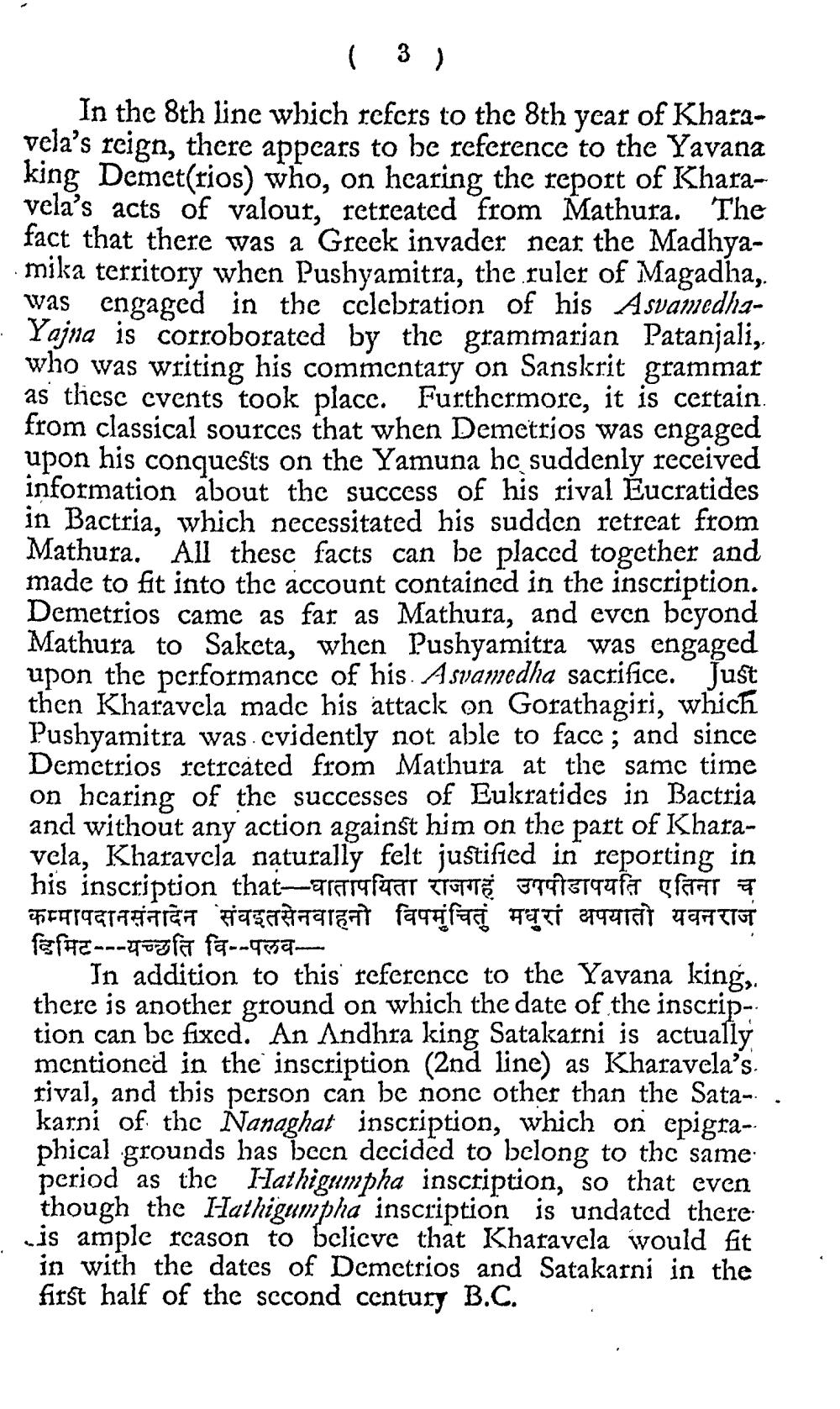________________
( 3 ) In the 8th line which refers to the 8th year of Khazavela's reign, there appears to be reference to the Yavana king Demet(rios) who, on hearing the report of Kharavela's acts of valour, retreated from Mathura. The fact that there was a Greek invader neat the Madhyamika territory when Pushyamitra, the ruler of Magadha, was engaged in the cclebration of his AsvamedhaYajna is corroborated by the grammarian Patanjali, who was writing his commentary on Sanskrit grammar as thcsc cvents took place. Furthermorc, it is certain. from classical sources that when Demetrios was engaged upon his conquests on the Yamuna hc suddenly received information about the success of his rival Eucratides in Bactria, which necessitated his sudden retreat from Mathura. All these facts can be placed together and made to fit into thc account contained in the inscription. Demetrios came as far as Mathura, and even bcyond Mathura to Saketa, when Pushyamitra was engaged upon the performance of his. Asvamedha sacrifice. Just then Khafavela made his attack on Gorathagiri, which Pushyamitra was.cvidently not able to face; and since Demetrios retrcáted from Mathura at the same time on hcaring of the successes of Eukratides in Bactria and without any action against him on the part of Kharavela, Kharaycla naturally felt justified in reporting in his inscription that TTTEFTAT TETTE STATTFT grafit कम्मापदानसनादेन संवइतसेनवाहनो विपमुंचितुं मधुरां अपयातो यवनराज fefe---Tayfa fa--139
In addition to this reference to the Yavana king, there is another ground on which the date of the inscription can be fixed. An Andhra king Satakarni is actually mentioned in the inscription (2nd line) as Kharavela's. rival, and this person can be none other than the Sata- . karni of the Nanaghat inscription, which on epigraphical grounds has been decided to belong to thc same: period as the Hathigumpha inscription, so that even though the Hathigumpha inscription is undated there is ample rcason to bclicve that Kharavela would fit in with the dates of Demetrios and Satakarni in the first half of the second century B.C.




